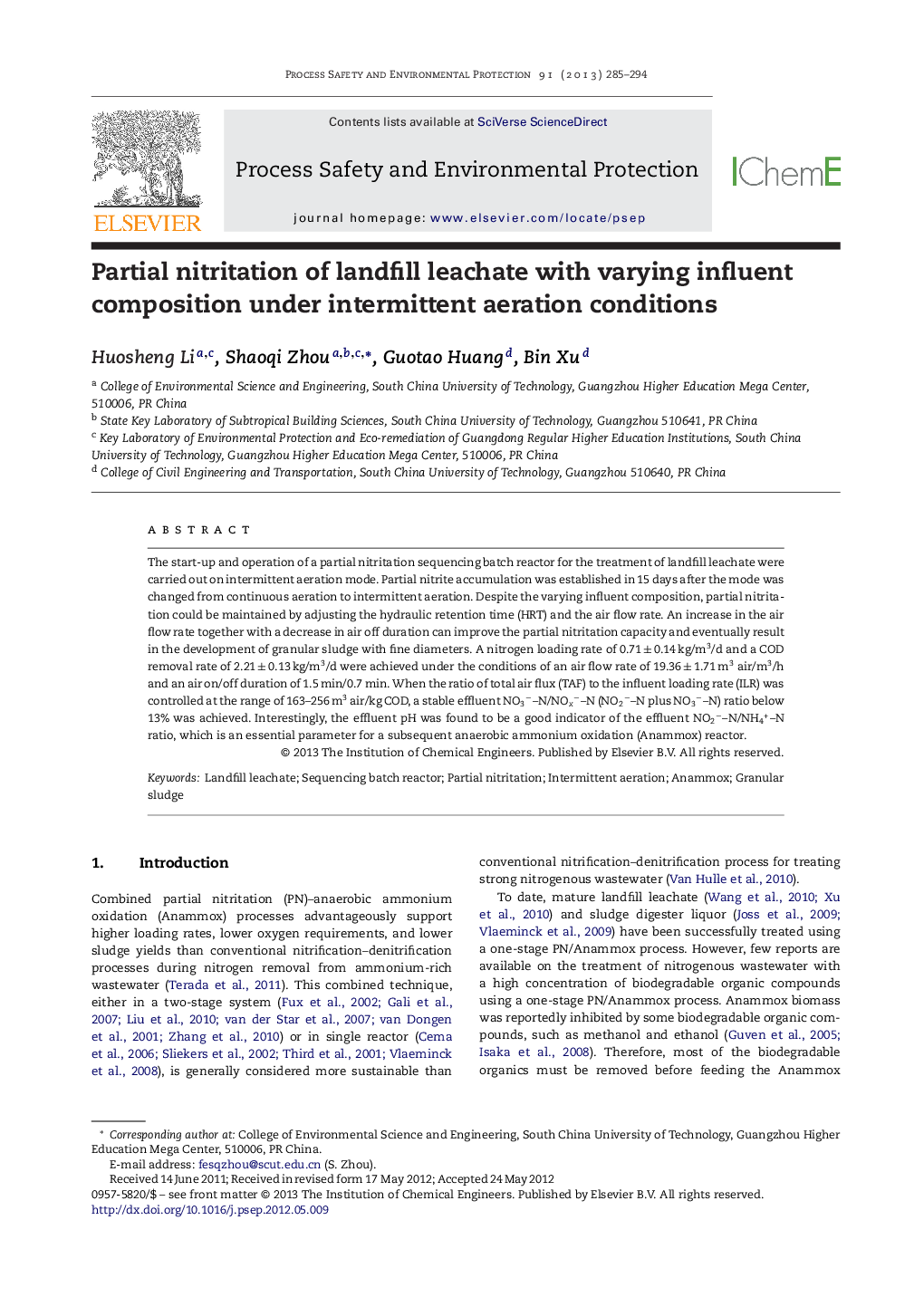| Article ID | Journal | Published Year | Pages | File Type |
|---|---|---|---|---|
| 588398 | Process Safety and Environmental Protection | 2013 | 10 Pages |
The start-up and operation of a partial nitritation sequencing batch reactor for the treatment of landfill leachate were carried out on intermittent aeration mode. Partial nitrite accumulation was established in 15 days after the mode was changed from continuous aeration to intermittent aeration. Despite the varying influent composition, partial nitritation could be maintained by adjusting the hydraulic retention time (HRT) and the air flow rate. An increase in the air flow rate together with a decrease in air off duration can improve the partial nitritation capacity and eventually result in the development of granular sludge with fine diameters. A nitrogen loading rate of 0.71 ± 0.14 kg/m3/d and a COD removal rate of 2.21 ± 0.13 kg/m3/d were achieved under the conditions of an air flow rate of 19.36 ± 1.71 m3 air/m3/h and an air on/off duration of 1.5 min/0.7 min. When the ratio of total air flux (TAF) to the influent loading rate (ILR) was controlled at the range of 163–256 m3 air/kg COD, a stable effluent NO3−–N/NOx−–N (NO2−–N plus NO3−–N) ratio below 13% was achieved. Interestingly, the effluent pH was found to be a good indicator of the effluent NO2−–N/NH4+–N ratio, which is an essential parameter for a subsequent anaerobic ammonium oxidation (Anammox) reactor.
► Rapid start-up of the PN reactor fed with raw leachate using intermittent aeration. ► Shorter anoxic duration along with larger air flow rate enhanced PN capacity. ► Granular sludge developed under intermittent aeration with shorter anoxic duration. ► Effluent pH was found to be an indicator of partial nitritation. ► TAF/ILR at 163–256 m3 air/kg COD led to the effluent NO3−–N/NOx−–N ratio <13%.
